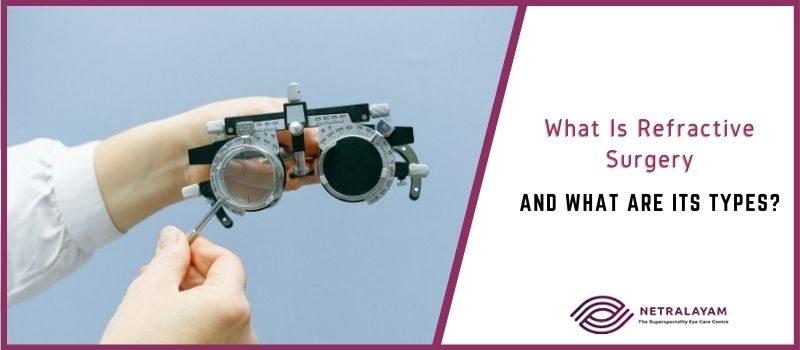Committed to Eye Care with Compassion, Technology and Competency
Committed to Eye Care with Compassion, Technology and Competency

6/28/2021
Refractive surgery is a common procedure to treat vision problems. This treatment aims to correct refractive errors and to reduce or, if possible, ensure that you do not need eyeglasses or contact lenses. This article discusses the various types of refractive surgery.
This is a type of vision problem wherein an individual cannot see clearly. It is caused by a cornea that is not shaped perfectly. The cornea is the clear part at the front of an eye that bends and focuses light waves. Refractive errors prevent the light from an object from focusing on the retina (light-sensitive nerve layer that lines the back of the eye) and resulting in a blurred image. Refractive errors can sometimes also occur in healthy eyes.
This is a surgical method for correcting refractive errors. There are several surgical procedures for adjusting or simply correcting a person’s focusing ability by reshaping the cornea. In other procedures, a lens is implanted inside the eye. Although eye surgeons performed many types of refractive surgeries to correct one’s vision, LASIK (Laser-Assisted in Situ Keratomileusis) is the most widely performed one that involves reshaping the cornea.
First, a laser or surgical blade creates a thin flap in the cornea. Next, the excimer laser removes a thin tissue layer and sculpts the underlying cornea into a new shape to correct the refractive error. This flap is then placed in its original position and attaches on its own without sutures after a few minutes.
The epithelium is removed, and the excimer laser sculpts the cornea to correct refractive error. The eye's surface is mapped using a computer, and the amount of tissue to be removed is calculated. A contact lens is placed on the eye following the procedure to speed the epithelial healing process. This surgery helps to reduce low to high myopia, low to moderate hyperopia, and astigmatism.
This was a very common refractive surgery. In this procedure, incisions were made in the cornea with a diamond scalpel. This flattens the center of the cornea and changes its curve, thereby reducing the refraction. This procedure is no more done due to high complication rates.
This type of surgery also corrects astigmatism by making one or two incisions at the steepest part of the cornea as these incisions cause it to relax and acquire a more curved shape. It is a safe and effective surgery. However, recently AK has been replaced by LRI and LASIK.
TIn SMILE – a small incision is made in the cornea and a lenticule of the cornea is made using Femtolaser technology. That lenticule is removed from the small incision that was created. It has advantage of small incision which leads to less foreign body sensation after the procedure.
These intra-corneal rings are thin rings that are implanted into the cornea. They change the curve of the cornea and improve the person’s vision. This procedure is mainly used for treat keratoconus.
Refractive eye surgery involves minimal discomfort as the eye is often numbed with eye drops before the surgery. During the surgery, a person may be awake as the eye is usually kept open with an eye speculum. It is a spring-like device that’s positioned between the eyelids. Post-surgery, the eye may burn, itch or feel heavy. The doctor will prescribe pain medicines, and eye drops to ease discomfort. Recovery time from this surgery may vary.
If you can see well enough and don’t always need contacts or glasses, the improvement from the surgery won’t be worth the risk. Moreover, most health insurance plans consider eye surgery an elective procedure and don’t cover the cost.
If you’re looking for a leading “eye care centre near me,” with the best eye doctors in Kolkata, contact us at Netralayam – The Superspeciality Eye Care Centre. Our team consists of the best ophthalmologists in Kolkata. Our eye care services include cataract surgeries, refractive error surgeries, and more.
Comments are closed
